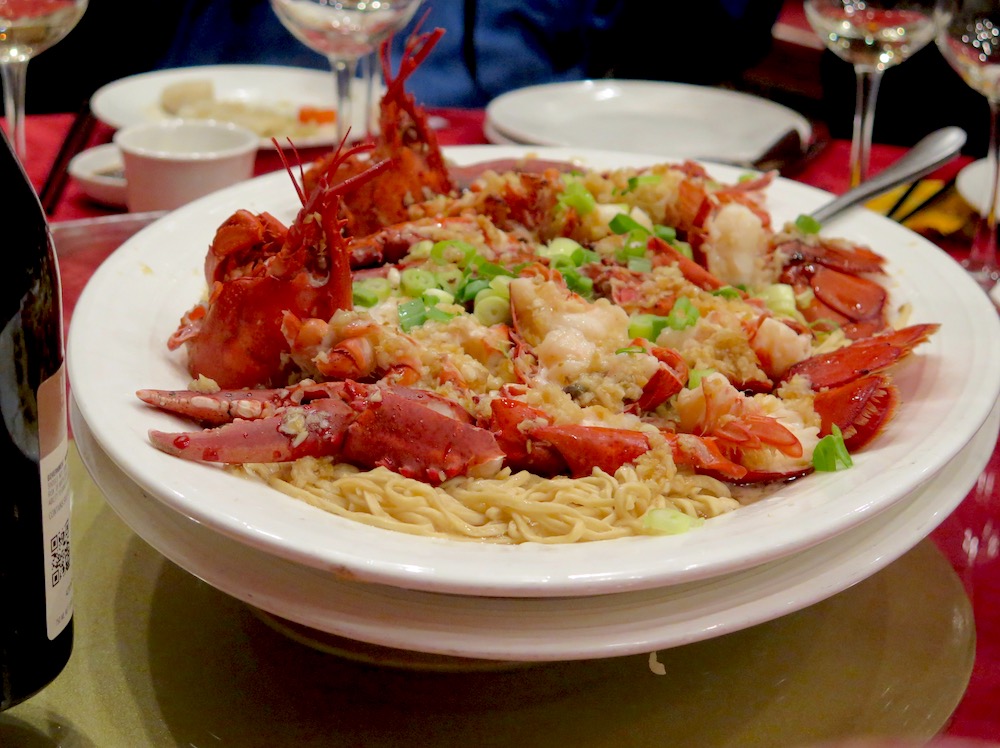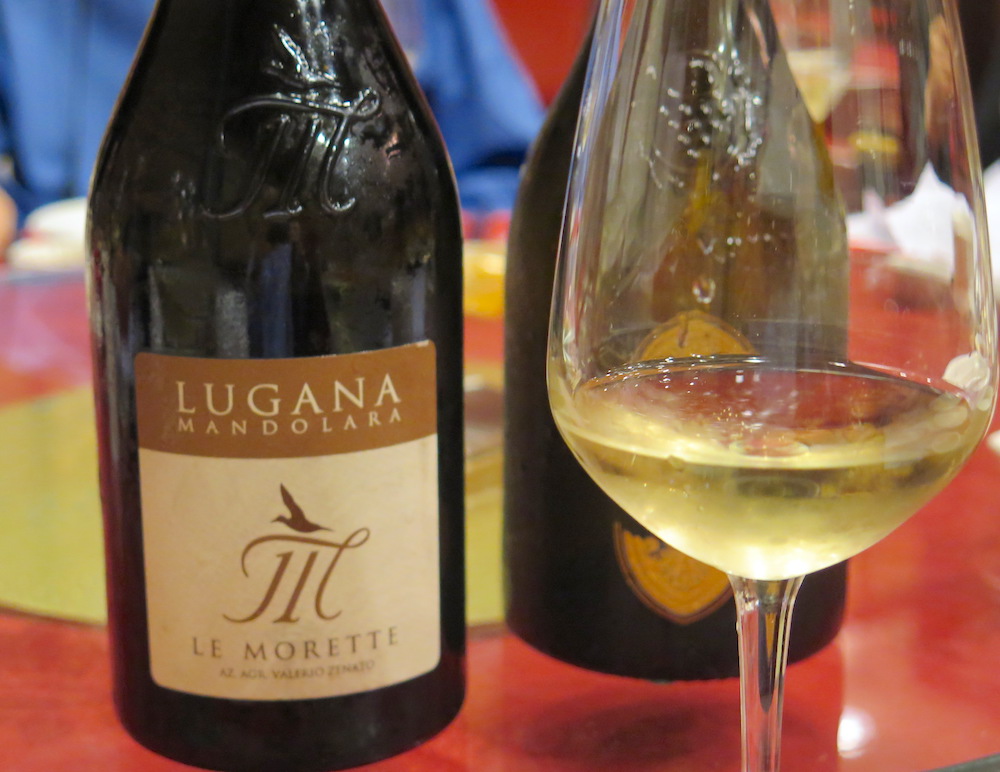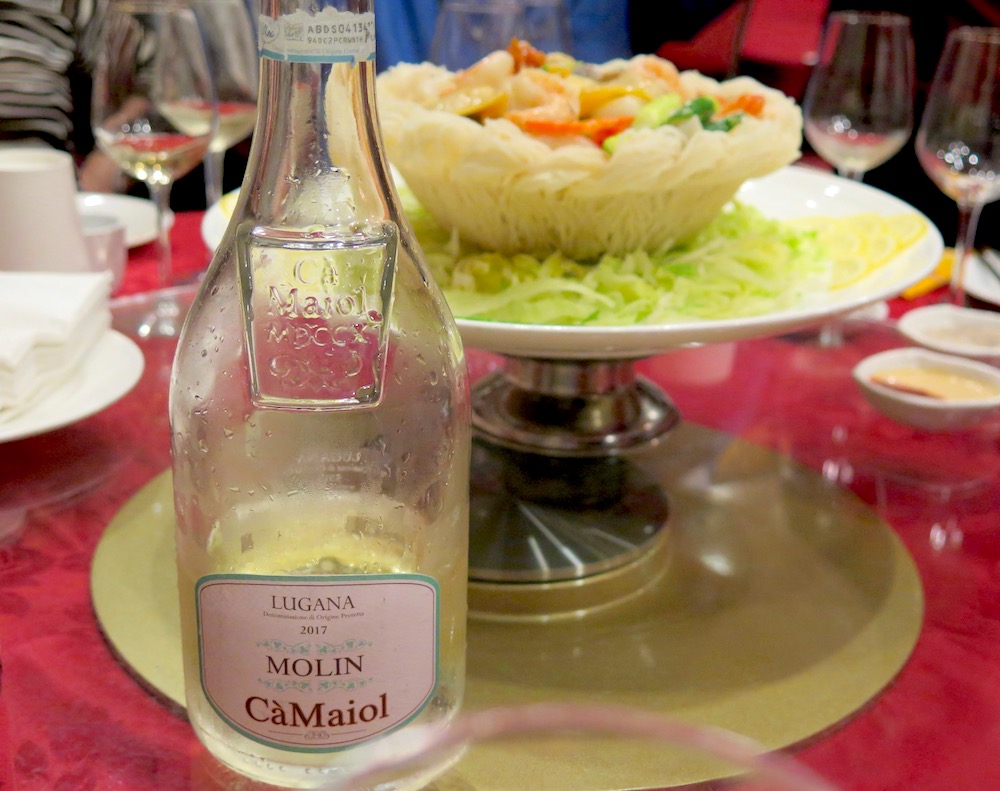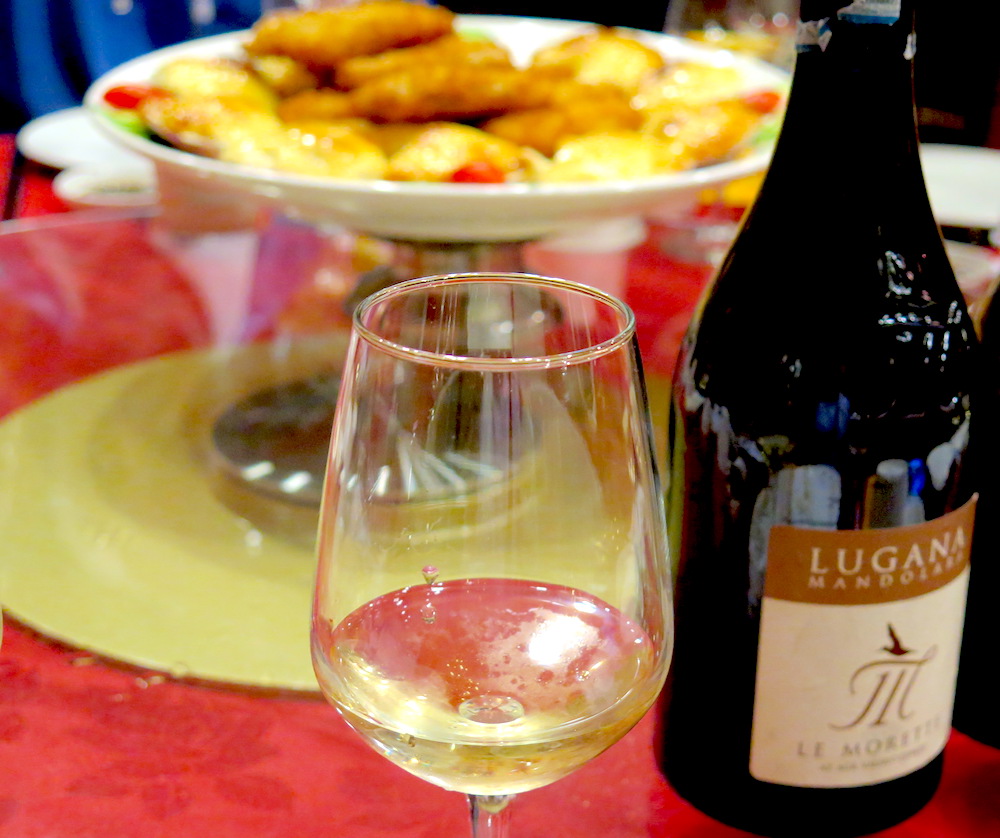
For many of us, Chinese cuisine has proved something of a conundrum when attempting to choose the correct wine pairings. Too often, the result is a resigned sigh and a Tsingtao. Yet, given pasta’s antecedents in China, it should come as no surprise to realize that Italian wines from the Lugana wine region pair beautifully with the seafood-rich bounty of Cantonese cuisine.
Straddling Lombardy and Veneto in northern Italy, the wine region known as Lugana is nestled along the southern shoreline of Lake Garda. One of Italy’s most picturesque vinicultural regions, Lugana produces aromatic white wines from the grape known as Turbiana (aka Trebbiano di Lugana). Notable for crisp citrus and almond notes alongside a pleasing acidity, the wines of Lugana are equally celebrated for their elegant structure.

A recent ten-course “Happiness Dinner” hosted at Jing Fong in New York’s Chinatown showcased the versatility of Lugana wines and their complementary qualities when paired with Cantonese cuisine. Also known as Guangzhou, Canton is the capital of the southern province of Guangdong which borders the sea. According to co-host Pinny Tam, Cantonese (aka Yue) cuisine utilizes light and mellow sauces with ginger, garlic, and scallion to enhance fresh ingredients. Seasonings are used in moderation, especially for seafood that is paired with vegetable in stir-fried dishes.
Baked scallops on the half shell were served alongside crisp seafood rolls, both of which were well-paired with Le Morette Lugana Mandolara 2017. A monovarietal produced exclusively from the Turbiana grape, this straw-yellow wine has a balanced white floral bouquet on the nose followed by white peach and bitter almonds on the palate, all of which made for a particularly pleasing complement to the rich creaminess of the seafood.

Lugana has an illustrious pedigree with a vinicultural heritage that dates to the Roman Empire. Grape seeds have been found within Bronze Age pile dwellings—and throughout the Renaissance, various authors and artists praised the pleasures of the “exquisite Tribulani” and “a white wine of great quality and value.” In 1967, Lugana became the first wine region in Lombardy to earn its D.O.C.
In spite of the fact that nearly 70% of Lugana’s annual production is exported, Lugana wines possess the potential to be aged for 2-3 years and beyond. Co-host Susannah Gold, Lugana East Coast Ambassador and founder of Vigneto Communications, addressed her desire to showcase older Lugana wines by pairing Cà Maiol Molin Lugana DOC 2017 with the Cantonese specialty known as seafood in a pasta basket.

Named for the one of the estate’s old farms, Cà Maiol Molin is produced from the oldest vines of the Molino vineyard. A lively wine with a sparkling bouquet, Ca Maiol Molin exhibits a pale lemon yellow hue with notes of kiwi and almond and a hint of mint—and lingers on the palate with a sharp flinty finish. In the mouth, there are vibrant yellow fruits and herbs, which makes this wine a lovely complement to the seafood and vegetables served in the lightly-fried pasta basket.
Another alluring pairing was Cesari Cento Filari Lugana DOC 2016, an award-winning, well-balanced blend of 95% Turbiana and 5% Chardonnay. This straw-yellow beauty displayed highlights of green with fresh notes of paperwhite narcissus and juicy grapefruit. On the palate were notes of almond cake and a touch of lemongrass with a pleasing minerality and a lingering softness in the mouth.

According to the head of Consorzio Tutela Lugana DOC, the white clay soil of Lugana gives its wines an unmistakable flavor. At higher elevations, that soil becomes sandier and more in touch with stone, which lends a flavor flecked with flint. Equally important, Lugana’s microclimate benefits from the lake breezes of Lake Garda and a minimal change of temperature between night and day.
In Lugana, there’s an adage that when you drink Lugana wines young, you appreciate their freshness—but if you drink them after three years, what you enjoy is the wine’s full body. Regardless of when you choose to drink Lugana, consider pairing these well-balanced wines with the pleasures of Cantonese cuisine.

























